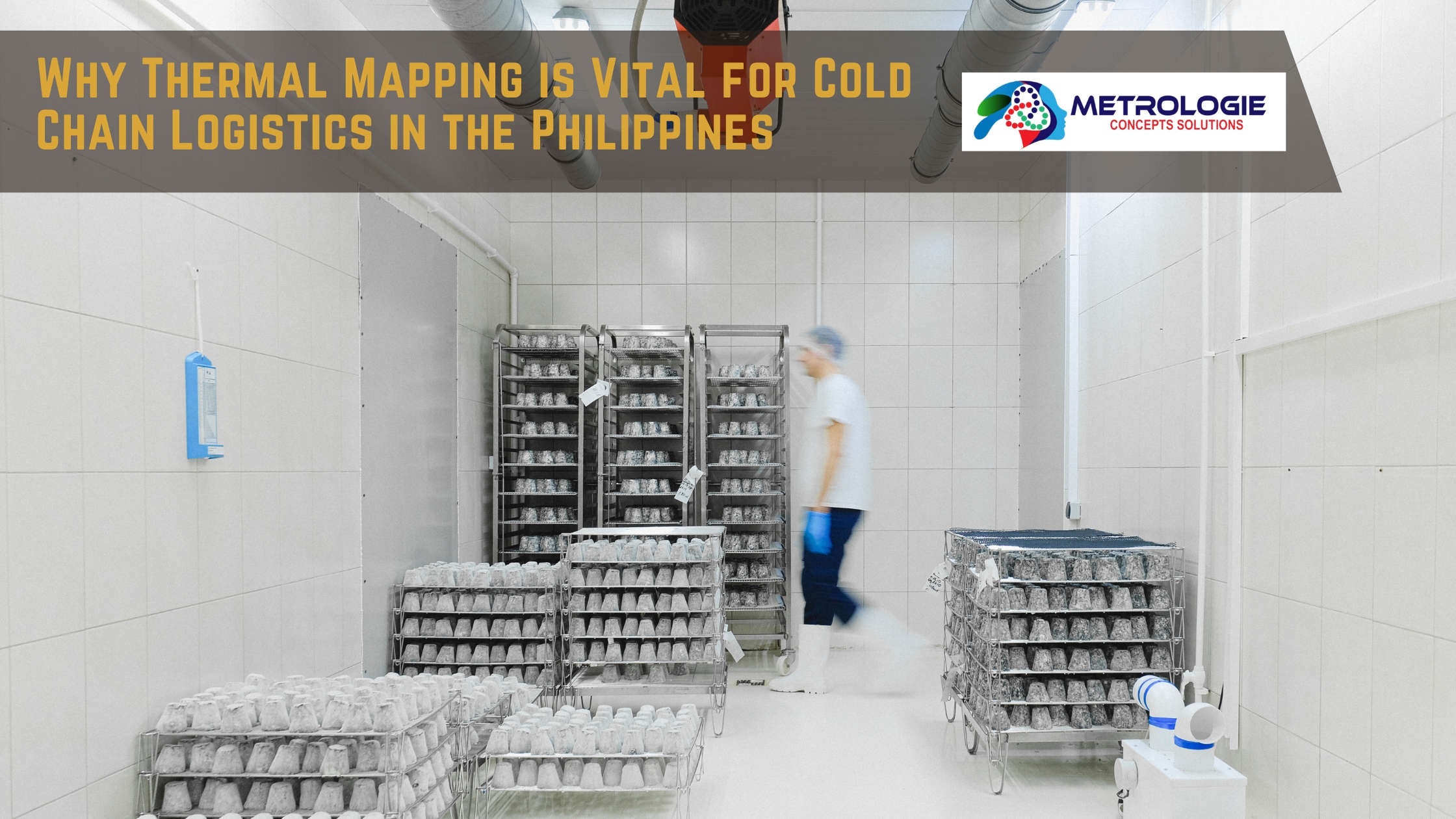Introduction: The Importance of Cold Chain Logistics in the Philippines
Cold chain logistics plays a critical role in ensuring the safe storage, handling, and transportation of temperature-sensitive goods in the Philippines. From fresh seafood and meat products to vaccines and pharmaceuticals, maintaining strict temperature control is crucial for preserving product quality and safety.
The tropical climate of the Philippines, with its high temperatures and humidity, presents significant challenges for businesses operating in food distribution, healthcare, and other industries reliant on refrigerated supply chains. Even minor temperature fluctuations can lead to spoilage, product degradation, and financial losses.
This is where thermal mapping becomes an essential tool in cold chain logistics. By identifying temperature variations within storage areas, transport containers, and warehouses, businesses can optimize temperature control, prevent product wastage, and comply with strict industry regulations.
This article explores why thermal mapping is vital for cold chain logistics in the Philippines, its benefits, and how businesses can implement an effective thermal mapping strategy.
Understanding Thermal Mapping in Cold Chain Logistics
Thermal mapping is a scientific process used to identify temperature variations within a controlled environment. It involves placing sensors in multiple locations inside a refrigerated warehouse, cold storage unit, or transport vehicle to monitor and record temperature fluctuations over a specific period.
By analyzing the data collected, businesses can determine if there are hot spots, cold zones, or inconsistent temperature areas that could compromise product integrity.
Key Components of Thermal Mapping
- Temperature Sensors – Devices placed at different points in the cold storage area or vehicle to measure temperature variations.
- Data Loggers – Instruments that record temperature data over time, providing insights into fluctuations.
- Software & Analytics – Tools that process the collected data and generate reports for analysis.
- Corrective Actions – Strategies implemented based on the thermal mapping report to maintain optimal temperature conditions.
Thermal mapping is widely used in food distribution, pharmaceutical storage, and perishable goods transportation to prevent temperature-sensitive products from being exposed to unsafe conditions.
Challenges in Cold Chain Logistics in the Philippines
The Philippines faces unique challenges in maintaining an effective cold chain system due to its geographical structure, extreme weather conditions, and infrastructure limitations.
1. High Temperature and Humidity
With an average temperature of 27-34°C (80-93°F) and high humidity levels, maintaining refrigeration during transport and storage is a major challenge. Even slight temperature deviations can cause:
- Bacterial growth in food products
- Reduced efficacy of pharmaceuticals and vaccines
- Deterioration of cosmetic and chemical products
2. Inconsistent Power Supply
Power outages are common in the Philippines, especially in rural areas and provinces. Without proper backup power systems, refrigeration units can fail, leading to:
- Increased spoilage rates
- Loss of valuable inventory
- Safety concerns for pharmaceutical products
3. Poor Road and Transportation Conditions
Cold chain logistics relies heavily on efficient transportation systems. However, traffic congestion, rough roads, and long transit times can increase the risk of temperature fluctuations in refrigerated transport vehicles.
4. Compliance with International Regulations
Industries involved in food export, pharmaceuticals, and vaccines must comply with strict local and international regulations such as:
- Philippine FDA guidelines for pharmaceutical storage and transportation
- HACCP (Hazard Analysis and Critical Control Points) requirements for food safety
- WHO (World Health Organization) cold chain standards for vaccines
Failure to meet these standards can lead to penalties, product recalls, and loss of business reputation.
5. Limited Awareness of Thermal Mapping Practices
Many small and medium-sized businesses in the Philippines are unaware of how thermal mapping can improve cold chain management. As a result, they may rely on basic temperature monitoring rather than conducting detailed assessments of cold storage performance.
How Thermal Mapping Solves Cold Chain Challenges
Implementing thermal mapping in cold chain logistics provides several benefits that help businesses overcome logistical and environmental challenges.
Ensuring Product Safety and Quality
By mapping temperature fluctuations, businesses can identify areas where products are exposed to unsafe conditions. This helps in:
- Preventing microbial growth in food products
- Maintaining the effectiveness of pharmaceuticals and vaccines
- Ensuring perishable goods reach consumers in optimal condition
Reducing Wastage and Financial Losses
Spoiled goods result in massive financial losses for businesses. Thermal mapping helps minimize spoilage by:
- Identifying temperature inconsistencies in storage units and transport vehicles
- Allowing real-time temperature adjustments to prevent product damage
- Improving inventory management and reducing expired stock
Enhancing Regulatory Compliance
Regulatory bodies require businesses to document their cold chain performance. Thermal mapping provides data-driven proof of temperature control, ensuring compliance with:
- HACCP food safety requirements
- GMP (Good Manufacturing Practices) for pharmaceutical storage
- Philippine FDA and Bureau of Agriculture and Fisheries Standards (BAFS)
Businesses that comply with these regulations avoid penalties and maintain consumer trust.
Improving Cold Chain Efficiency
Thermal mapping optimizes cold storage operations by identifying problem areas and improving energy efficiency. This leads to:
- Better airflow distribution inside storage units
- Reduced energy consumption and lower operational costs
- Increased shelf life of perishable goods
Providing Actionable Data for Decision-Making
With thermal mapping reports, businesses can make data-driven decisions regarding:
- Warehouse layout optimization
- Cold storage placement and equipment upgrades
- Choosing reliable transportation routes with minimal delays
Industries That Benefit from Thermal Mapping in the Philippines
Thermal mapping is crucial in several industries, ensuring that temperature-sensitive products remain in optimal condition throughout the supply chain.
Food and Beverage Industry
- Meat, poultry, and seafood exporters
- Dairy product distributors
- Fresh fruit and vegetable suppliers
- Frozen and processed food manufacturers
Pharmaceutical and Healthcare Sector
- Vaccine storage and distribution
- Biopharmaceutical companies
- Hospitals and medical facilities
- Drug importers and exporters
Retail and Supermarkets
- Grocery stores and convenience stores
- Online grocery delivery services
- Fast food and restaurant chains
Logistics and Transportation Companies
- Refrigerated trucking services
- Shipping companies handling perishable goods
- Cold storage warehouse operators
Best Practices for Implementing Thermal Mapping in Cold Chain Logistics
To maximize the benefits of thermal mapping, businesses should follow these best practices:
- Conduct Regular Thermal Mapping Studies – Perform assessments during peak seasons, temperature extremes, and after system upgrades.
- Use Certified Calibration Services – Ensure all temperature sensors and data loggers are properly calibrated for accurate readings.
- Train Employees on Cold Chain Monitoring – Staff should be knowledgeable in temperature control, handling protocols, and emergency responses.
- Utilize Remote Monitoring Systems – Install real-time temperature tracking to detect and correct fluctuations immediately.
- Analyze and Act on Data Findings – Use thermal mapping reports to make strategic improvements to cold storage layouts and transport practices.
Conclusion: Investing in Thermal Mapping for a Reliable Cold Chain System
The future of cold chain logistics in the Philippines depends on businesses adopting smarter, data-driven solutions to combat temperature fluctuations and product spoilage. Thermal mapping is a proven method that ensures the integrity, safety, and efficiency of refrigerated storage and transportation systems.
By implementing thermal mapping strategies, businesses can:
- Maintain high-quality standards for perishable goods
- Reduce financial losses due to spoilage
- Comply with local and international regulations
- Gain a competitive edge in the growing cold chain industry
Investing in thermal mapping is not just about regulatory compliance—it is a commitment to delivering safe, high-quality products to Filipino consumers.




